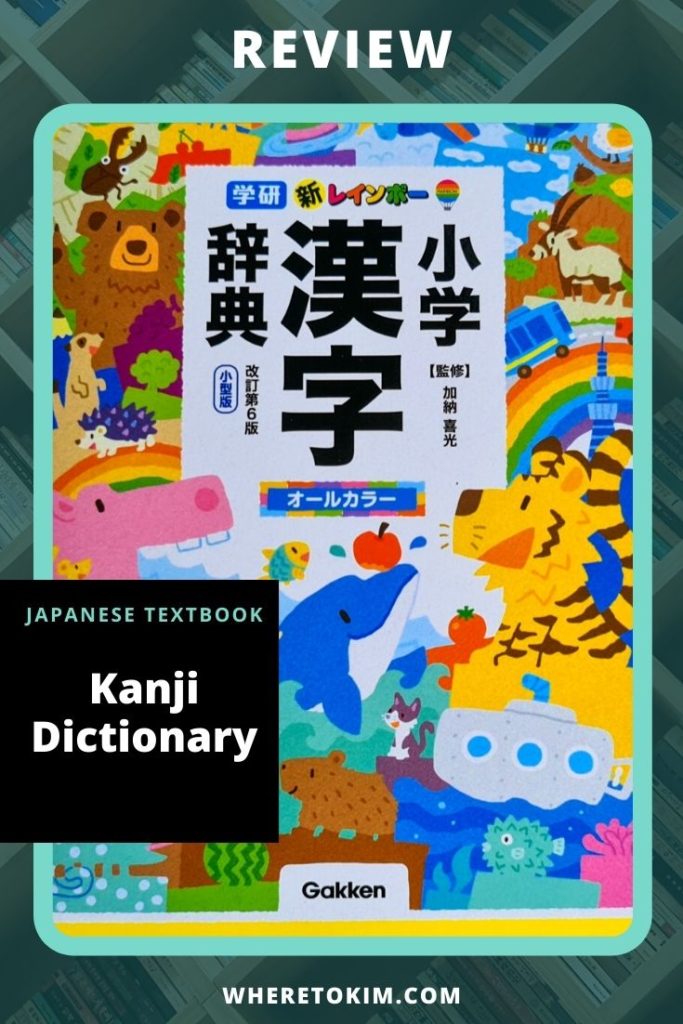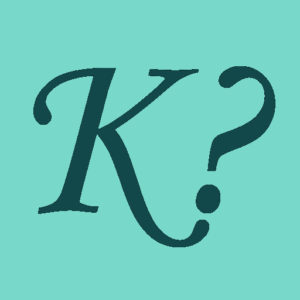The New Rainbow Elementary School Japanese Kanji Dictionary (Japanese title: 新レインボー小学漢字辞典 改訂第6版 小型版) is a great resource for Japanese language learners. You’ll learn more about Kanji in no time.
Use this Kanji dictionary to look up Japanese characters and study their many meanings and readings, as well as the idioms in which they are most commonly used.
Japanese level
As this book is intended for Japanese elementary school students, it is 100% in Japanese. You can start using it (with a dictionary) if you are studying for the JLPT N4 level. The grammar used in the explanations is simple, the sentences are short, and the kanji mentioned in the explanations have furigana.
And by “start using it” I really mean start using it. At first, you look up the Kanji to find out about their pronunciation and words in which they are often used, so you can look up the Kanji in another dictionary app. Later, you can use the dictionary to study individual Kanji to learn more about their meaning and usage.
This dictionary contains 3150 Kanji including the 1026 Kanji that Japanese kids learn at elementary school and the most common Kanji for personal names. As a Japanese learner, you can comfortably use this dictionary for a very long time.
Content
Let’s take a look inside.
Finding Kanji
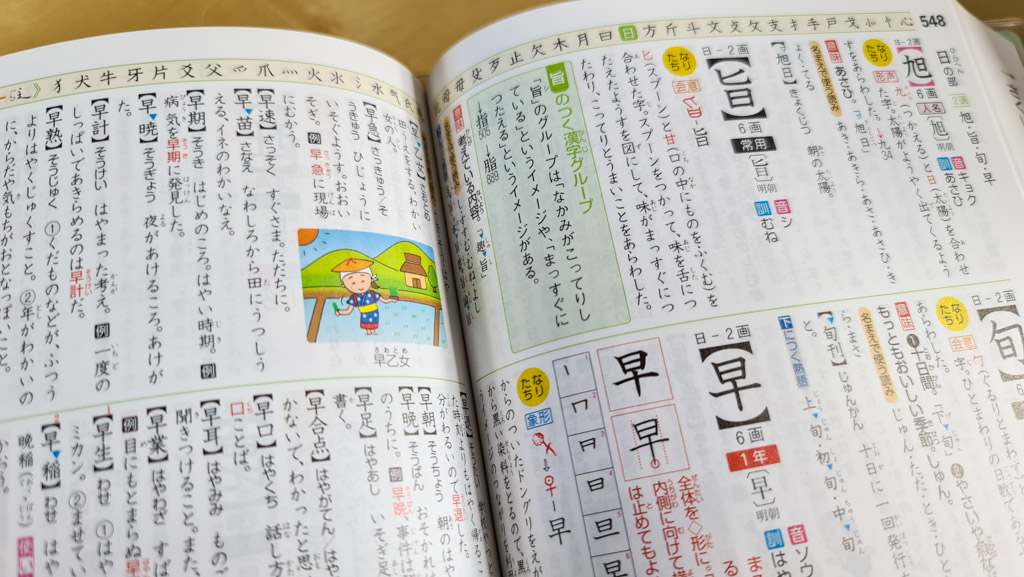
The Kanji are ordered by radical and the radicals are ordered by stroke number. You look up characters by determining the radical of the Kanji and then counting the strokes of that radical. The book will often help you if you are trying to look up a character under the wrong radical as it lists references to some other characters that fall under a different radical but contain the element you are looking at. Every radical entry begins with a brief index of the characters included in that section and their page numbers. At the top of the page, you can see the other radicals with the same amount of strokes, which helps you navigate within that section of the book.
Indexes
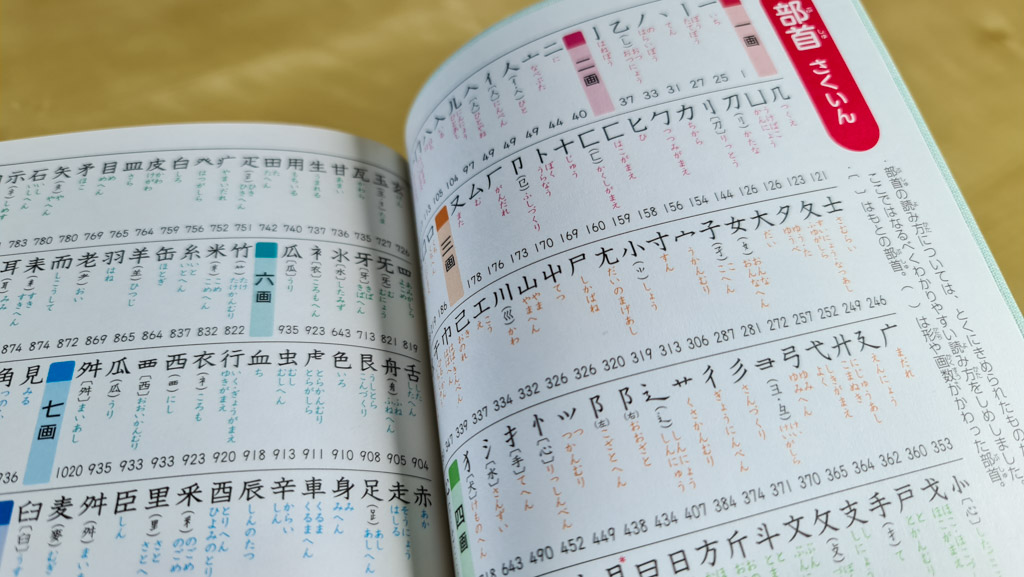
You can use the above method if you are fairly sure about the radical of a Kanji or if you are just exploring what’s out there. In most cases, you will look up a character in one of the twelve indexes at the beginning of the book.
- 部首 – An index of the radicals. This index also shows the alternative shapes of the radicals when they are found on the side
- 音訓 – Pronunciation: this index also lists the stroke count and learning level (elementary school year, personal name or extra character)
- 総画 – Stroke count: this index also lists the radical and learning level (elementary school year, personal name or extra character)
- 学年別 – School year
- コラム – This index shows where you can find highlights about words with the same reading but different kanji
- 漢字グループ – This index shows where you can find highlights about Kanji groupings (references to other kanji that deal with the same concept)
- 故事成語 – This index shows where you can find highlights about idioms derived from historical events or classical literature of China
- 四字熟語 – Four character idioms (Yojijukugo)
- 句 – Idioms that often appear in junior high school entrance exams and newspapers
- Plant names (植物名) and animal names (動物名)
- 国字 – Native Japanese characters
- なりたち – Naritachi: drawings of how the character came to be and explanations of the elements a Kanji consists of that helps you memorize their meaning
For Japanese beginners, the first three indexes are most useful. The others will be interesting when you reach an intermediate level and want to study Kanji in more detail.
At the end of the book, you can find more information about the different elements of a character and how they help you to guess the sound or meaning.
Kanji explanations
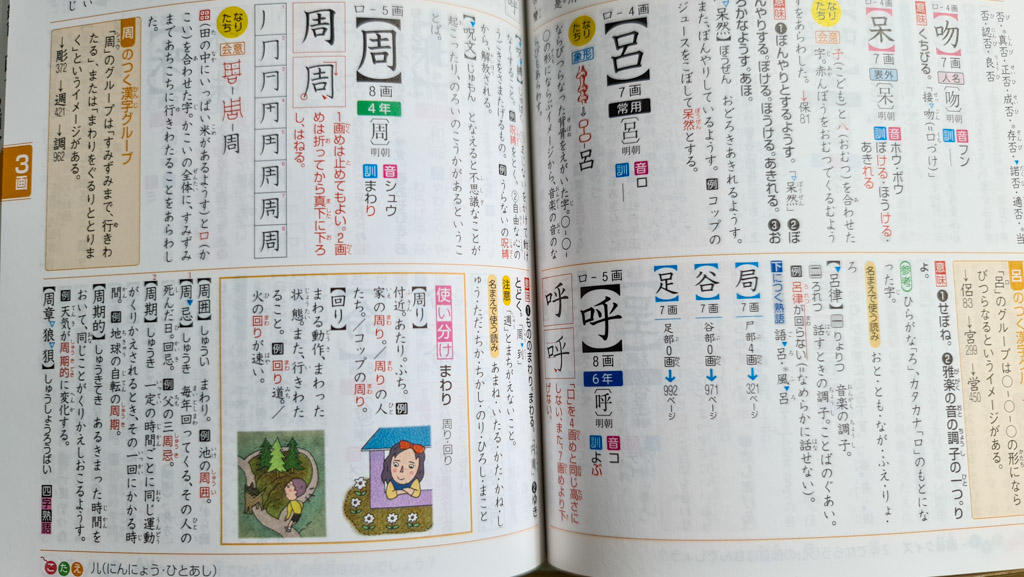
Common Kanji are explained in more detail than Kanji that are used less frequently or only appear in a few set expressions. You can see the stroke order with some visual and textual hints for the tricky parts. One or more meanings are given for all Kanji. Look at the examples of compounds in which the Kanji occur to explore the readings and expressions. I can assure you, there is usually more information than you need.
When relevant, more information is highlighted about ambiguity, Kanji groupings, naritachi and the other interesting things listed in the indexes. These highlights are clearly marked with colorful headings and often contain pictures.
You can read more about using this dictionary in the manga book that discusses the indexes and layout (included with the dictionary).
Opinion
Design
The new full color edition looks good and is easy to navigate. I can find the information I am looking for at a glance. The only downside is that the font is rather small, though that goes for most Japanese dictionaries I have seen.
Using the dictionary
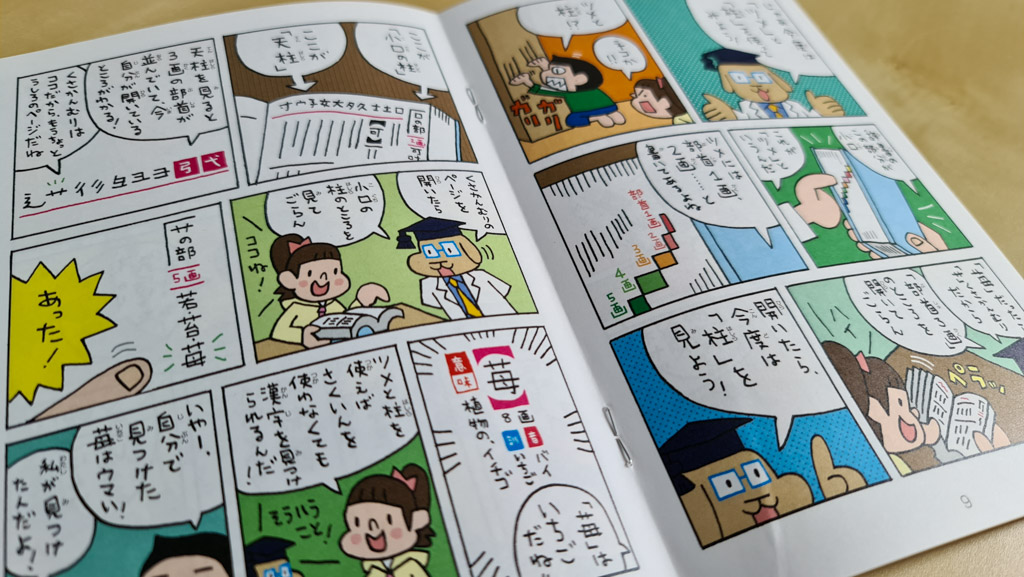
This Kanji dictionary has a steep learning curve. If you start using it as early as N4, you will need another dictionary to look up the words in the explanations. Even if you know enough grammar to read the sentences, you won’t be able to make full use of all the features until your vocabulary is at a higher level.
If you are not used to looking up characters, it will take you a while to master the book. Once you get the hang of using the indexes, you will find what you are looking for in no time.
I use this dictionary to look up readings, but also to study a few characters at a time. The Kanji groupings and ordering by radical are especially helpful in this regard, as it helps me tell the characters apart, which can be quite a challenge.
Before I bought this Japanese Kanji dictionary, I also considered another dictionary that orders the Kanji by elementary school year and uses more pictures and color to explain the meanings. It looks nicer but is not as suitable because there is much less information in the book. On the other hand, the ordering by school year is great if you are using the dictionary as a textbook, studying the easier and more commonly used characters first. It is also less overwhelming because it has less text and fewer words you may not know.
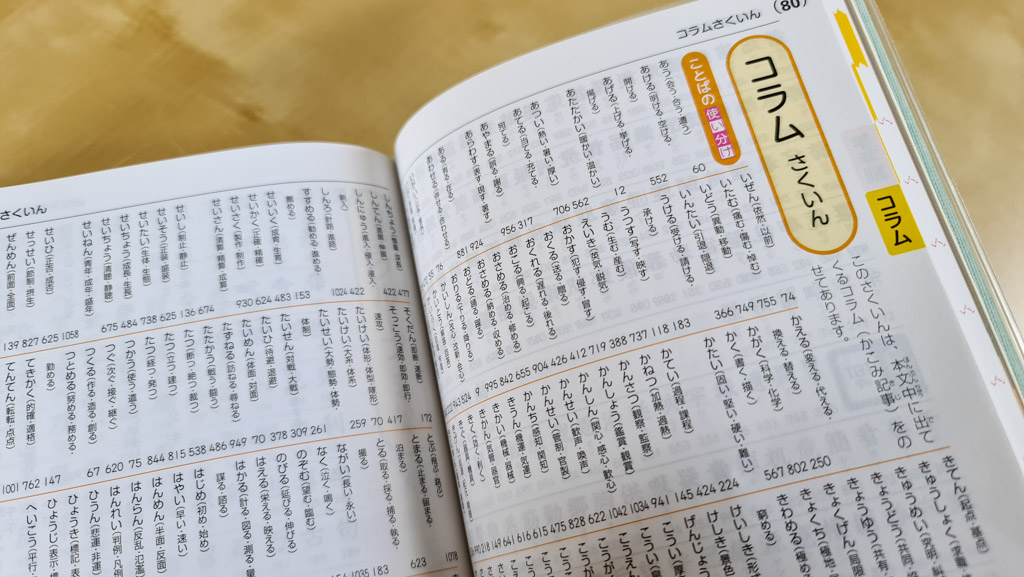
Japanese or English Kanji Dictionary?
Why not use an English dictionary? Because you will never get the same in-depth information as you would with native sources. I considered Kanji Dictionary for Foreigners Learning Japanese 2500 N5 to N1, but the sheer amount of information I would not have had if I had bought it… I am very happy with my purchase because I love the challenge. As soon as I have a basic understanding of grammar, I switch to native material. It is so rewarding when you find that you can read your first sentence without looking up words.
Since you are studying the Kanji in Japanese, you also get some reading practice as a bonus. You will see that once you drop the English textbooks in favor of Japanese textbooks, your Japanese will improve much faster. It’s hard at first, but more rewarding in the end. Books for Japanese elementary school children excel at captivating their audiences and – let’s not admit it – foreign adults as well.
Interested?
Get your copy of the New Rainbow Kanji Dictionary (Japanese title: 新レインボー小学漢字辞典 改訂第6版 小型版) from Amazon.co.jp. International shipping costs and import taxes may be high, but for me (shipping to the Netherlands) it was still cheaper than ordering it elsewhere. At Amazon, you can also find more pictures of the content.
A good supplement to your Kanji learning journey is another book by the same publisher about synonyms, antonyms, homonyms and Kanji readings. Check out my review of this Japanese textbook.
